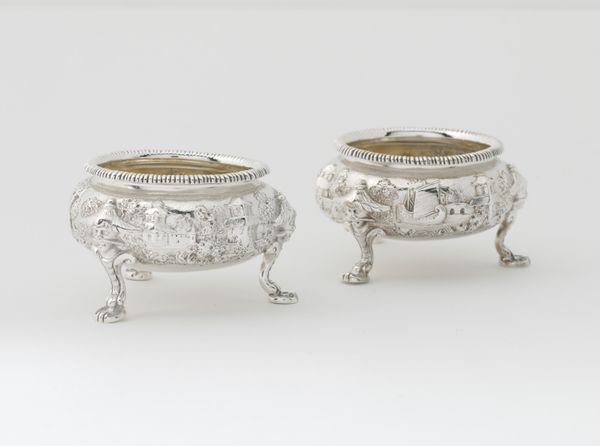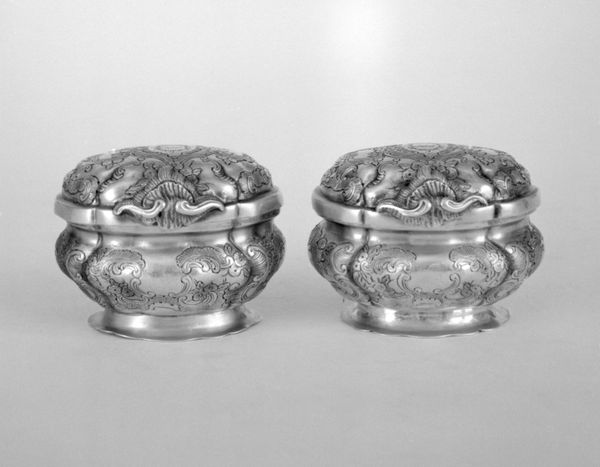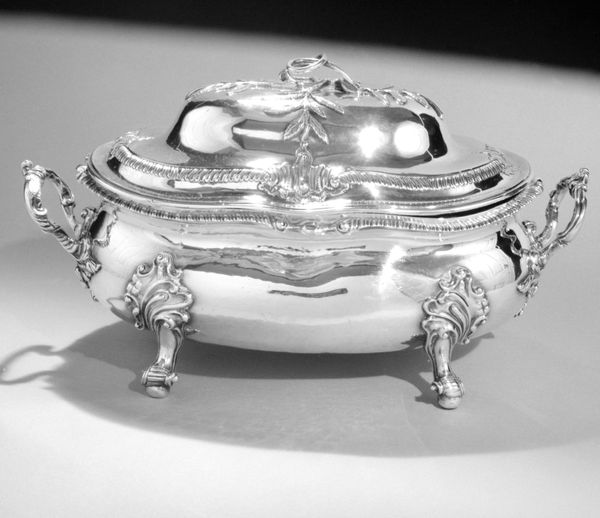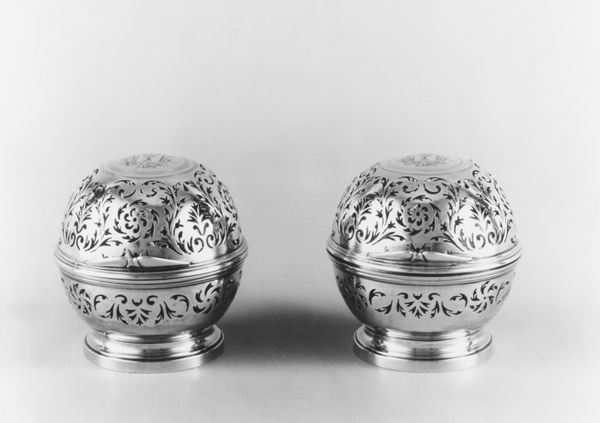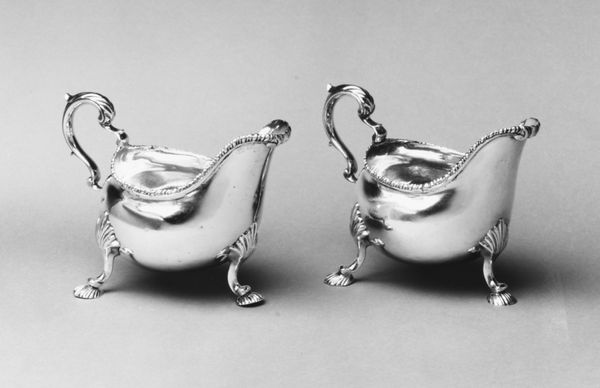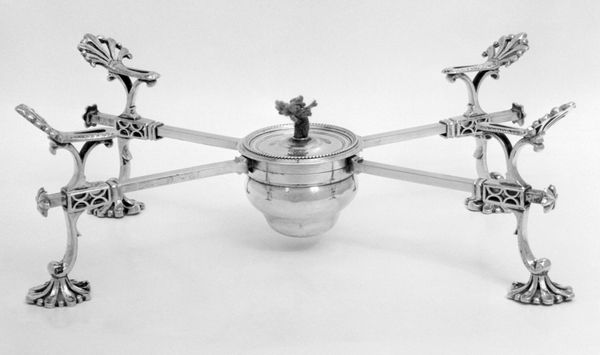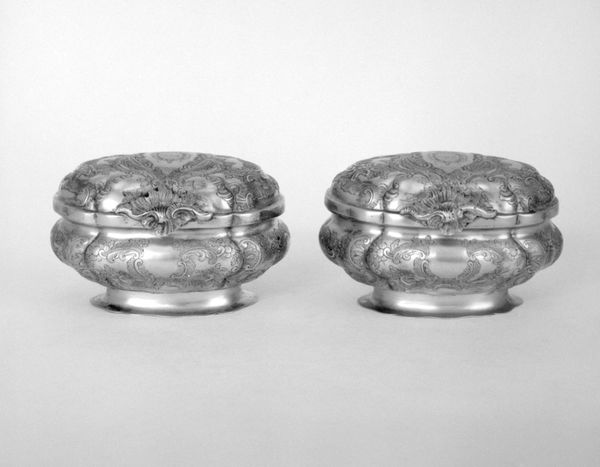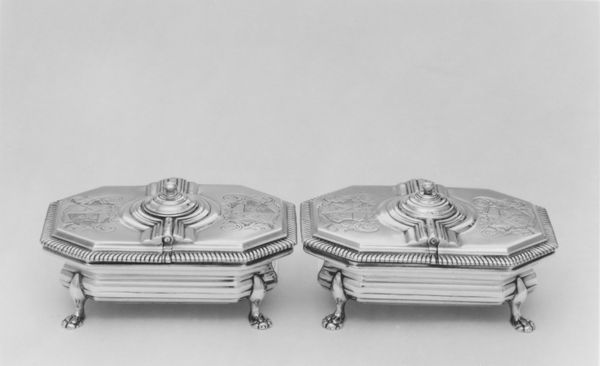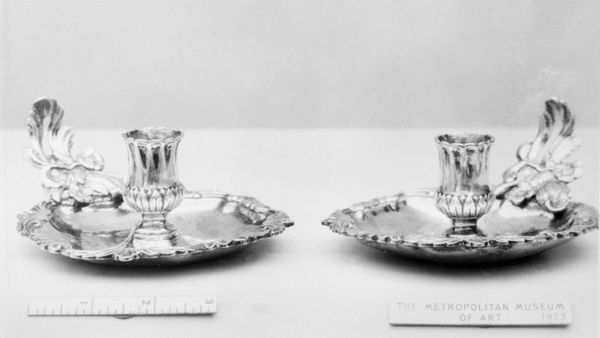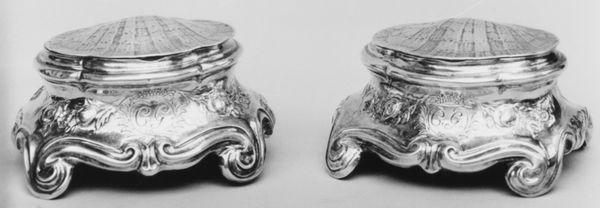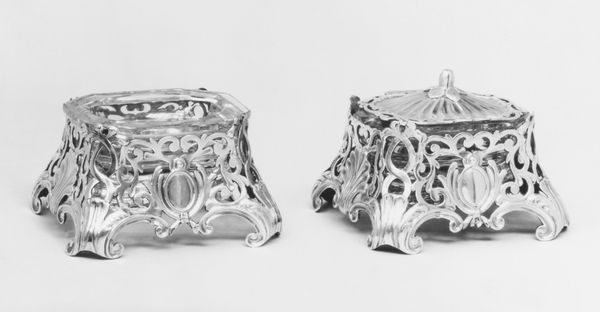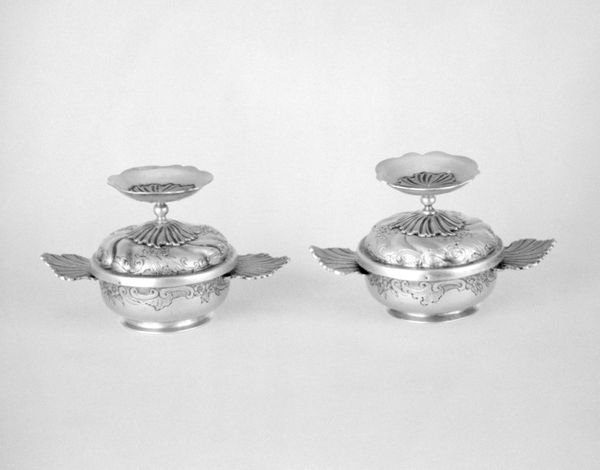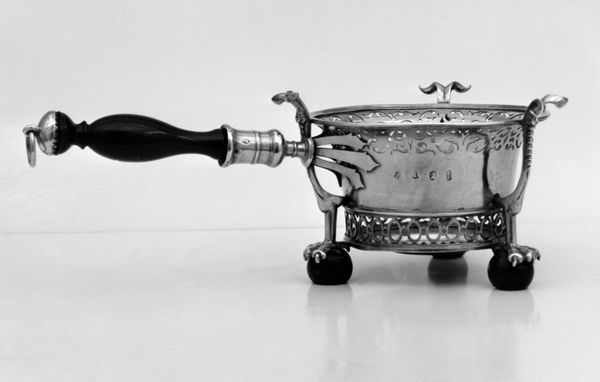
brass, silver, metal, sculpture
#
brass
#
silver
#
metal
#
sculpture
#
decorative-art
#
rococo
Dimensions: Diameter (each): 4 1/4 in. (10.8 cm)
Copyright: Public Domain
Editor: So, these are a set of four saltcellars made by Paul de Lamerie around 1737-38. They’re made of silver and other metals, and they’re here at the Metropolitan Museum of Art. They strike me as being incredibly ornate. I mean, even for salt! How do you interpret these? Curator: Well, at first glance, their Rococo style speaks volumes. The figures, foliage, and scrolling designs… They’re not just decorative, they represent abundance, luxury, and the almost theatrical nature of 18th-century dining. Think about it – what does salt symbolize? Editor: Hmm…Preservation? Value? Something essential, I guess. Curator: Precisely! And placing it in a vessel so meticulously crafted elevates its importance. The use of figures evokes classical mythology but given a contemporary twist. Consider these satyrs: what emotions or attributes might they elicit? Editor: Fun, indulgence maybe? It definitely doesn't seem like the container is 'just' for salt. I mean, who wouldn't want these on their table to start conversations? Curator: Exactly! They are meant to be conversation pieces, indicators of status and wealth, and a way to assert one’s place in society. Also, notice how each detail pulls the eye, leading the gaze to linger. What would happen when light reflected from this vessel? Editor: Ah, it might almost glow! Curator: Reflecting wealth, literally. So, even something as simple as salt, housed in these objects, becomes imbued with deeper significance and reflects the values of the time. Editor: Wow, I never thought of salt cellars being so culturally rich! I appreciate understanding their deeper social purpose. Curator: Me too; objects often conceal many rich, meaningful purposes!
Comments
No comments
Be the first to comment and join the conversation on the ultimate creative platform.
